Diastasis recti, or abdominal separation, can affect anyone, especially postpartum women. If you’re looking to learn how to fix diastasis recti, the good news is that there are specific exercises and treatments that can help. This article covers effective methods and step-by-step exercises to heal diastasis recti, offering you a path to regain core strength and stability.
Key Takeaways
- Diastasis recti, or abdominal muscle separation, often affects women post-pregnancy, and can cause issues like lower back pain and poor core stability.
- Detecting diastasis recti can be done through self-check methods, but seeking help from healthcare professionals is essential for proper diagnosis and treatment.
- Effective treatment includes targeted exercises for core stability, physical therapy, and, in severe cases, surgery is an option when non-surgical methods fail.
Understanding Diastasis Recti
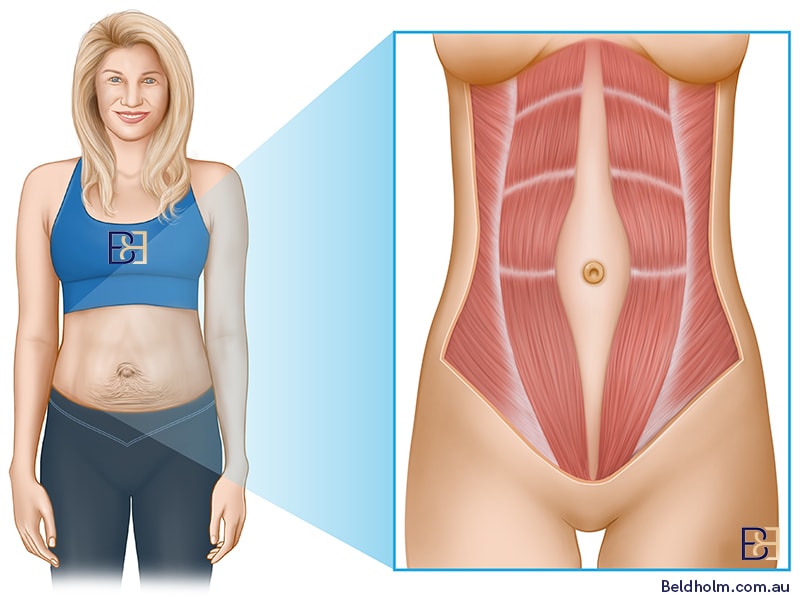
Book your appointment online now
Diastasis recti abdominis, also known as abdominal separation, is when the two sides of the superficial abdominal muscles separate along the connective tissue in the midline. This may present as a visible or palpable gap and, in some cases, can be associated with changes to core stability.
The rectus abdominis muscles — sometimes called the “six-pack” muscles — may separate, creating a gap that can affect the appearance of the abdominal wall. Some people also report symptoms such as a persistent abdominal protrusion, lower back discomfort, or changes in digestion; however, the type and severity of symptoms can vary from person to person.
Diastasis recti is relatively common, particularly during and after pregnancy. Research suggests that it occurs in many women during pregnancy due to the stretching of the abdominal wall to accommodate the growing uterus. It can also be seen in people who have experienced significant changes in weight, abdominal surgery, or certain physical activities. While it is more often discussed in the context of pregnancy, it can occur in men and non-pregnant women as well.
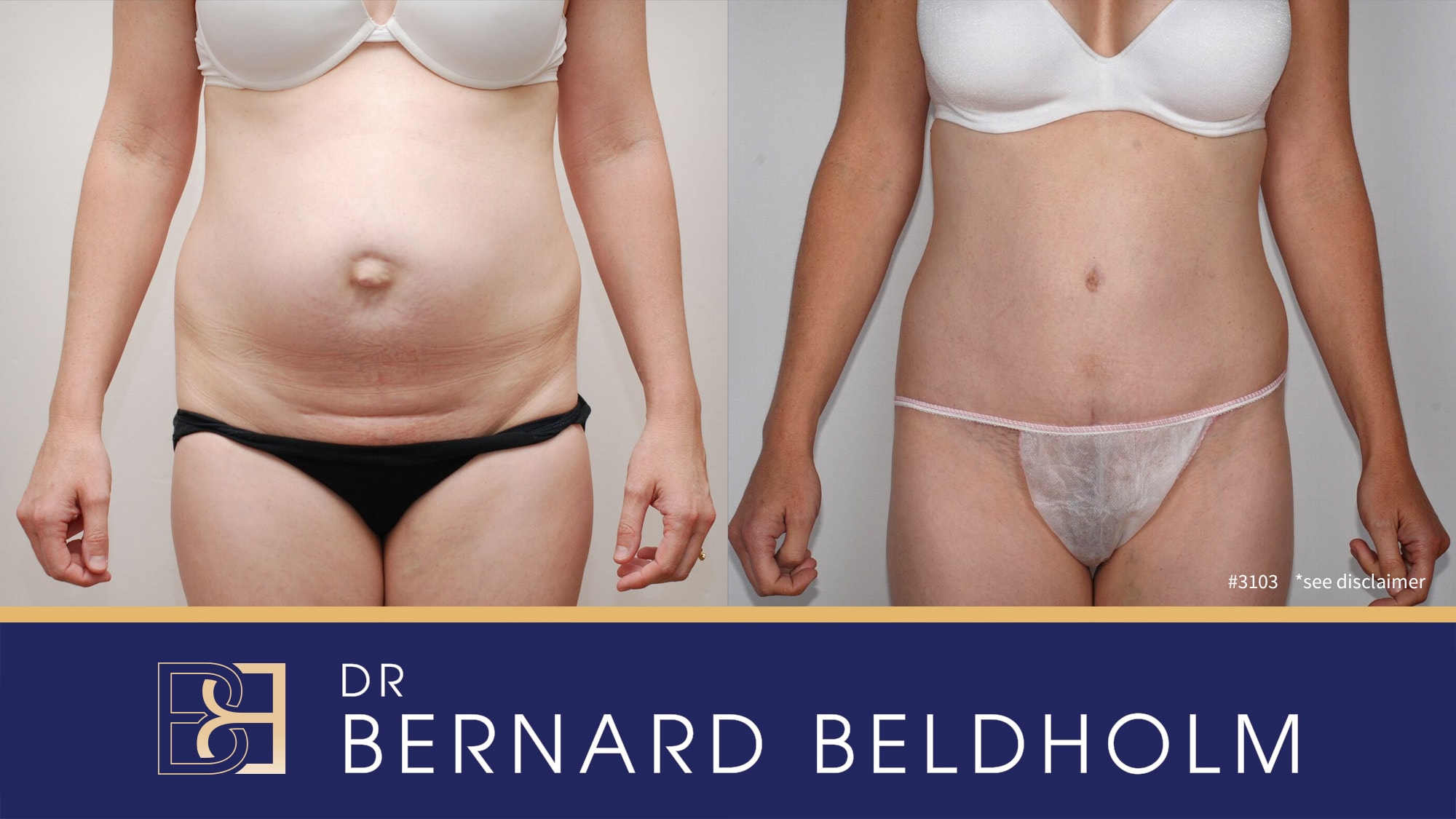
Disclaimer: Operation performed by Dr Bernard Beldholm. Adult content, surgery has risks; individual results vary, seek 2nd opinion. Please see the full disclaimer.
Symptoms of diastasis recti can be both physical and psychological. Physically, individuals may notice a gap between their abdominal muscles, lower back pain, and poor posture. This condition can also cause pelvic floor issues, which further complicate the recovery process.
Diastasis recti causes the linea alba, the connective tissue linking the left and right rectus abdominis muscles, to stretch. In severe cases, the gap between the separated tummy muscles can become quite wide. This not only affects appearance but also functional strength, making it crucial to treat the condition promptly.
How to Diagnose Diastasis Recti
Diagnosing diastasis recti can initially be done through self-check methods. One common technique involves lying on your back with your knees bent and feet flat on the floor. By slightly lifting your head and shoulders off the ground and engaging your core, you can check for a gap between your abdominal muscles by pressing your fingers along the midline of your abdomen. If you feel a separation wider than 3 cm, it may indicate diastasis recti.
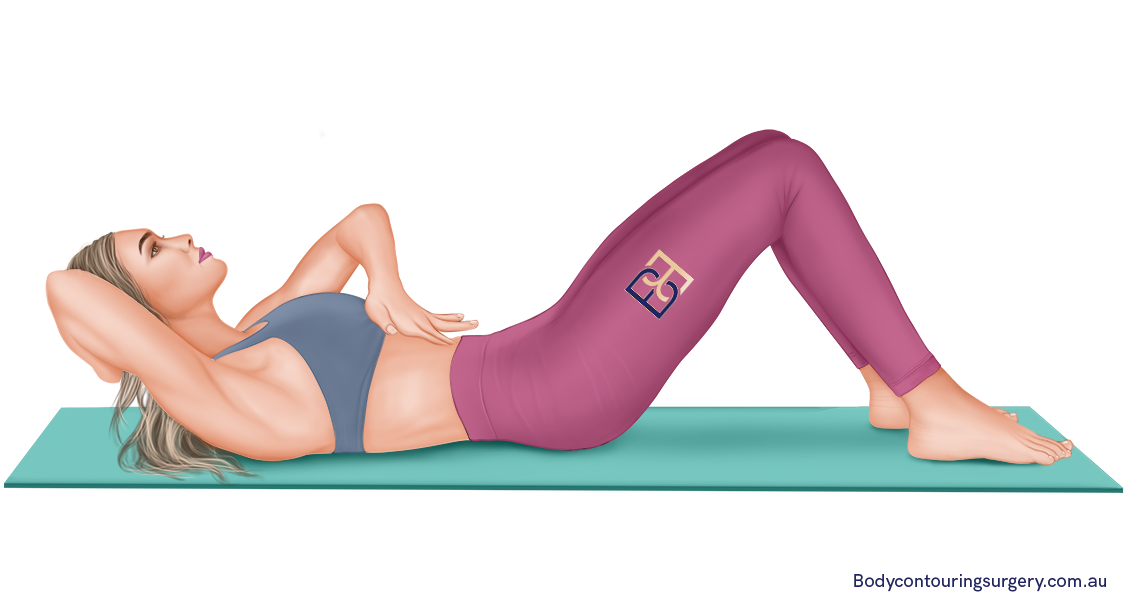
If self-checking raises concerns, the next step is to consult your GP. Your GP can advise you on whether you should see a physiotherapist. These professionals can provide a more accurate diagnosis and recommend appropriate treatments.
Assessing the severity of diastasis recti involves measuring the width of the gap between the muscles and evaluating the strength of the surrounding abdominal muscles. This helps in determining the best course of action for treatment, whether it’s through exercises, physical therapy, or in more severe cases, surgical intervention.
Effective Exercises to Fix Diastasis Recti
Specific exercises are key to healing diastasis recti. These diastasis recti exercises primarily target the transverse abdominis and pelvic floor muscles, which are essential for core stability and strength. Key components in treating the condition include engaging deep abdominals, deep breathing, and slow, controlled movements.
Three particularly effective exercises are transverse abdominis activation, pelvic floor exercises, and modified core exercises. Each focuses on core strengthening without worsening abdominal separation.
Transverse Abdominis Activation

The transverse abdominis muscle is crucial for core stability as it supports both the spine and pelvis. Strengthening this muscle can greatly increase overall functional strength and reduce the risk of injury. One effective exercise for activating the transverse abdominis is the heel slide. This exercise involves lying on your back with knees bent, sliding one heel away from the body while keeping the core engaged, and then returning to the starting position.
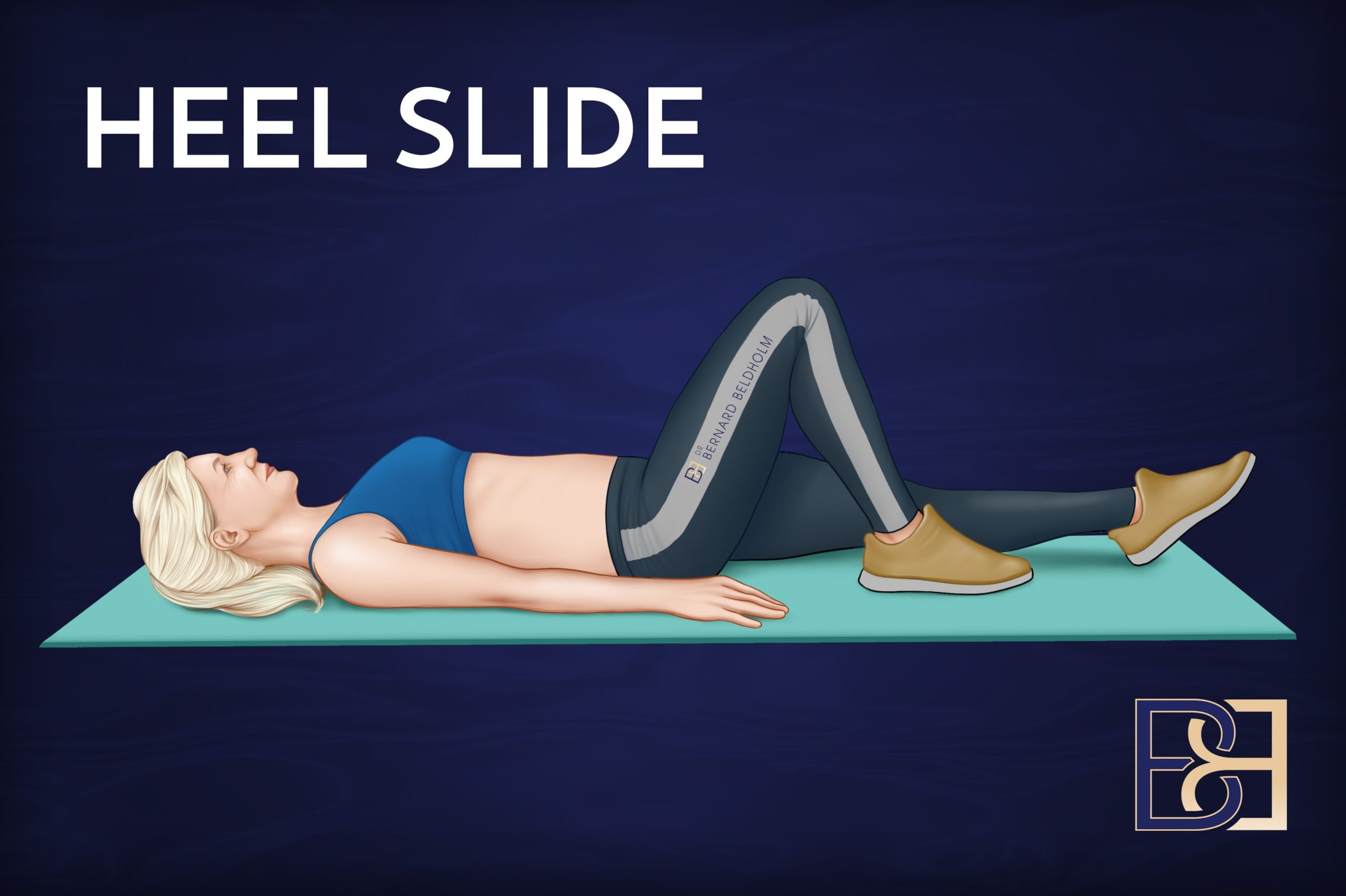
Abdominal bracing, which involves tightening the abdominal muscles as if bracing for a punch, is another beneficial exercise. This can be done in various positions, such as standing or lying down. Consistent practice of these exercises aids in bringing the separated abdominal muscles back together and increase core stability.
Pelvic Floor Exercises
New mothers recovering from diastasis recti greatly benefit from pelvic floor exercises. These exercises support the pelvic muscles, which are crucial for urinary incontinence control and overall recovery. One effective exercise is the pelvic tilt, which can be performed on all fours. By tilting the pelvis forward and backward, you engage the core and pelvic floor muscles, helping to strengthen them.
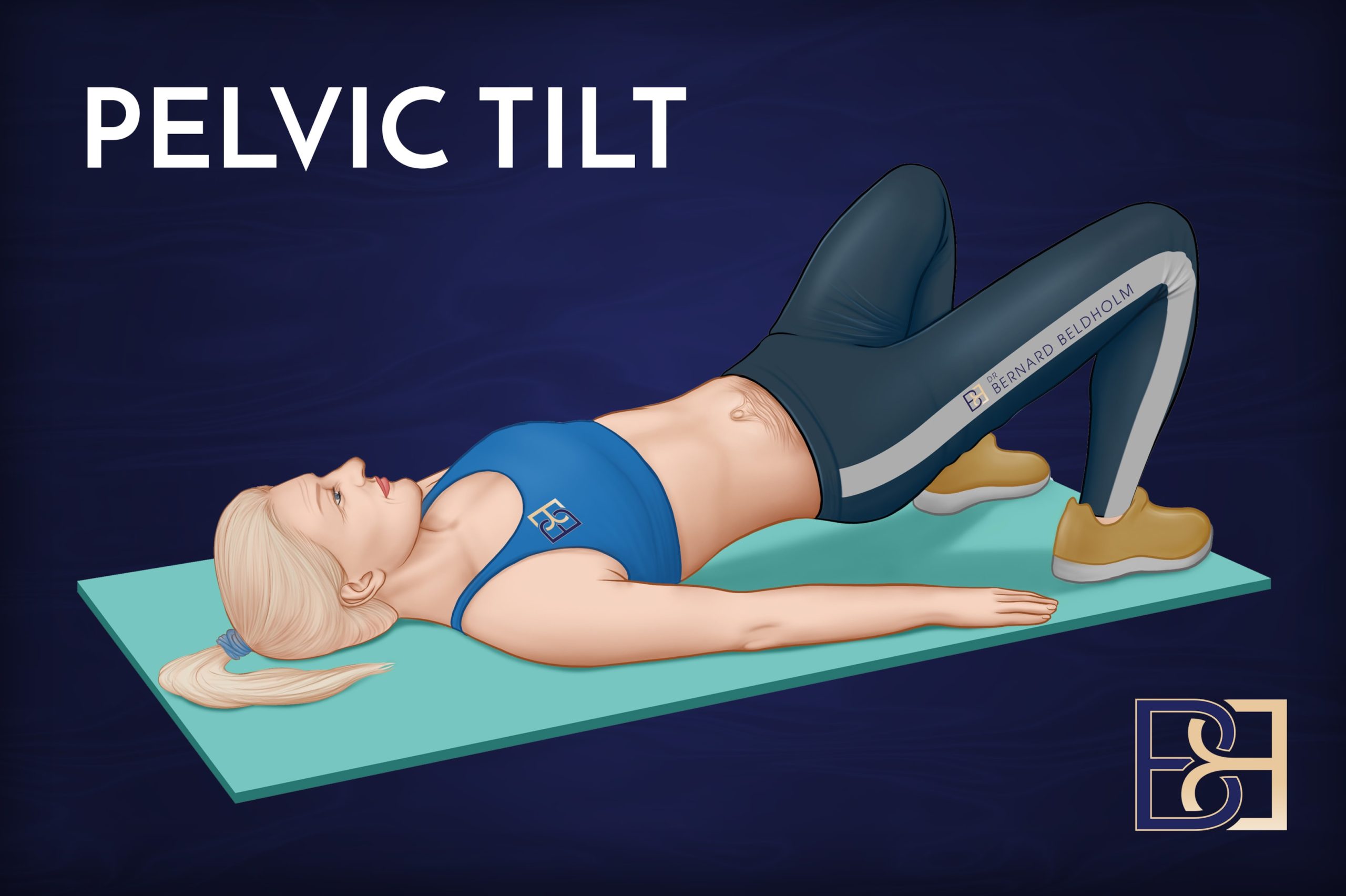
Kegel exercises, involving the contraction and relaxation of pelvic floor muscles, also significantly aid recovery. These exercises can be done anywhere and at any time, making them a convenient option for busy new mothers. Regular practice leads to noticeable change in core strength and stability.
Modified Core Exercises
Modified core exercises aim to strengthen the core without straining the abdominal separation. Toe taps, which involve lying on your back with knees bent and feet lifted off the ground, are one such exercise. By tapping one toe to the floor at a time while keeping the core engaged, you can increase core strength and stability.
Other effective exercises include modified planks and yoga poses. These exercises help build core strength gradually, ensuring that the abdominal muscles are not overstrained.
Avoiding traditional sit-ups and crunches is important, as these can exacerbate the condition.
Exercises to Avoid with Diastasis Recti
Certain exercises can worsen diastasis recti and should be avoided. Movements that push the abdomen outward, such as sit-ups and crunches, can increase the separation of the abdominal muscles. Heavy lifting is another activity to steer clear of, especially during postpartum recovery, as it can strain the abdominal area and make abdominal separation worse.
Yoga poses like downward dog and activities that cause the abdominal wall to protrude, such as double leg lifts, should also be avoided. It’s important to educate yourself on yoga practices and consult healthcare professionals who can provide guidance on movements to avoid. This helps to minimise further strain on the abdominal area and promotes healing.
The Role of Physical Therapy in Healing Diastasis Recti

Physical therapy plays a significant role in healing diastasis recti. Specialist physiotherapists can design tailored exercise programs that focus on strengthening the abdominal muscles. These programs often include exercises like pelvic tilts and Kegel exercises, which increase core strength and stability.
Neuromuscular electrical stimulation (NMES) is another physical therapy option that can target muscle activation. While physical therapy may not guarantee a complete fix for diastasis recti, it helps re-strengthen the abdominal muscles and prevent further deterioration.
Consistent therapy can lead to noticeable increase in muscle strength and separation within six weeks.
Non-Surgical Treatments for Diastasis Recti
Non-surgical treatments for diastasis recti include various supportive devices and alternative therapies. Abdominal support belts, for instance, can help hold the belly in and support the lower back, although they do not heal or strengthen core muscles. Other supportive materials include waist trainers and special underwear designed for postpartum women.
Alternative therapies like acupuncture and chiropractic care may help reduce symptoms such as back pain, though their overall effectiveness is not well-documented. Physical therapists can provide bracing options to support the abdomen and help reduce muscle separation. While these methods may offer some relief, they are often less effective than targeted exercises and physical therapy.
When to Consider Surgery for Diastasis Recti
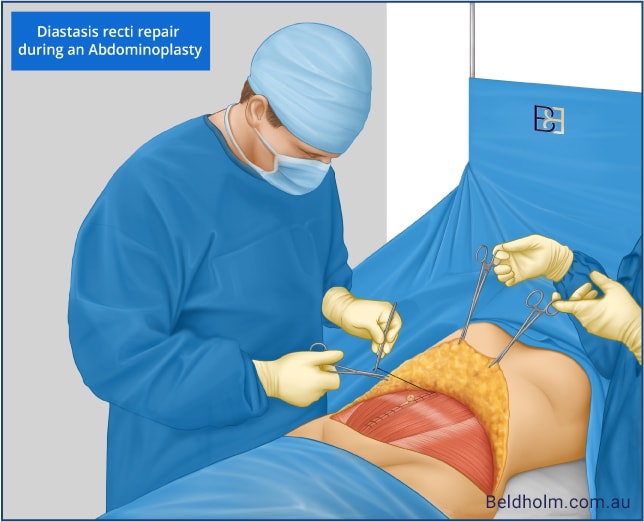
Surgery for diastasis recti is typically considered in severe cases or when non-surgical treatments have not been effective. Hernia repair is sometimes required in conjunction with diastasis recti surgery, particularly if an umbilical hernia is present.

Before opting for surgery, it’s important to weigh the risks and benefits. Surgery can be costly and involves a recovery period, but it can provide significant relief and increase core function. Consulting with a specialist surgeon experienced in diastasis recti repair, such as Dr Beldholm, is crucial for making an informed decision.
Abdominoplasty
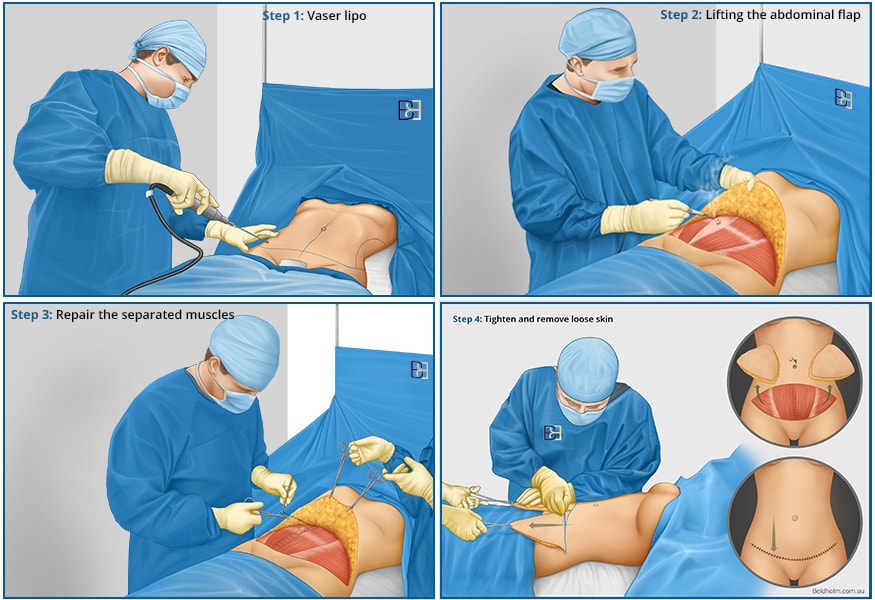
Abdominoplasty is a surgical procedure designed to repair diastasis recti by tightening the abdominal muscles. Good candidates for this procedure are individuals with separated abdominal muscles that have not found success with non-surgical treatments, often postpartum women. The surgery typically takes 2-4 hours and involves the use of non-dissolvable sutures to support the separated muscles.
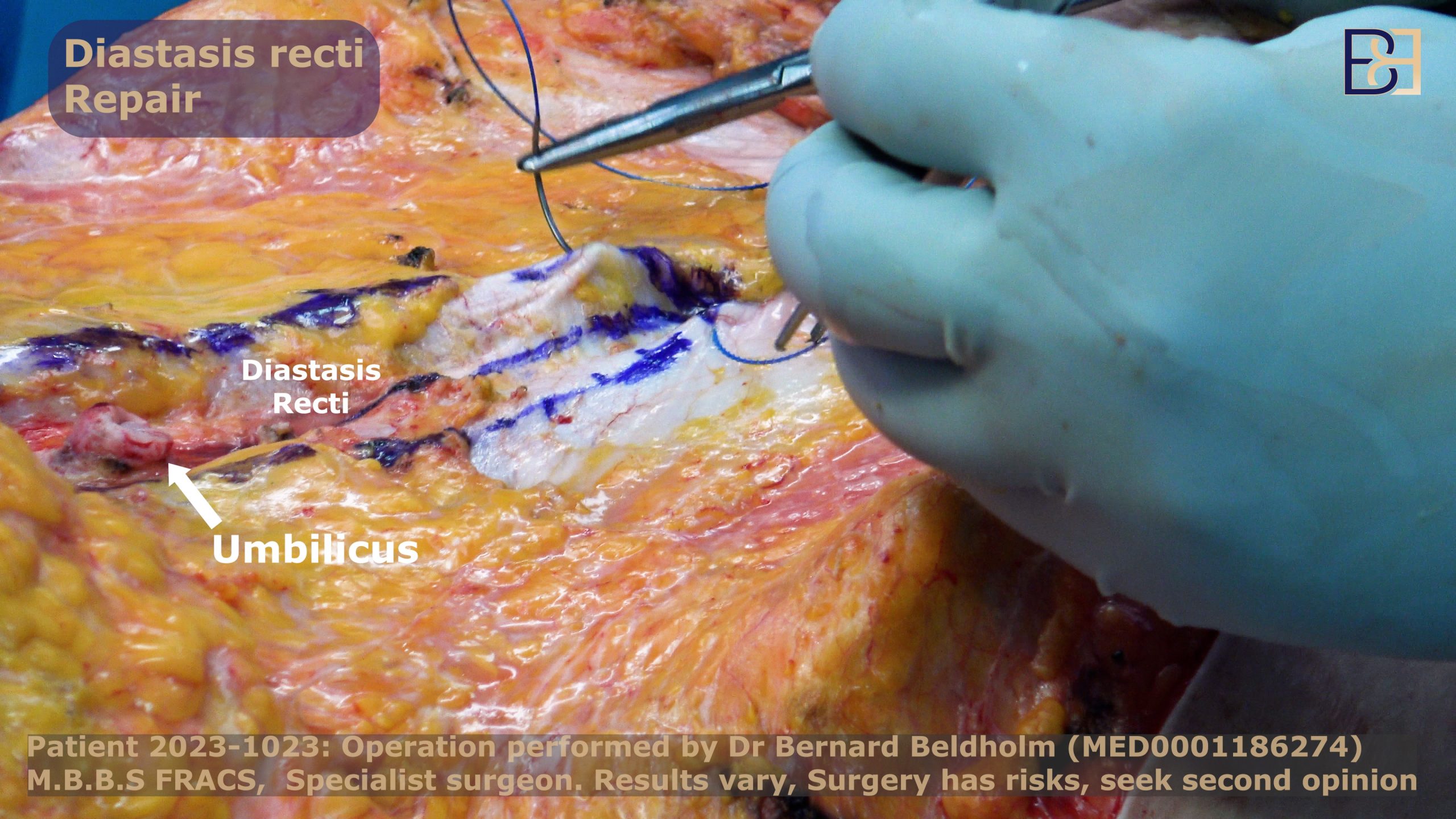
While complications are relatively rare, choosing an experienced surgeon such as Dr Bernard Beldholm and following preoperative and postoperative instructions can minimise risks. The scar from the surgery is usually located along the bikini line, making it less visible.
Patients are advised to wait 6-12 months post-childbirth before undergoing the procedure to ensure optimal results.
Recovery from Surgery
Recovery from diastasis recti surgery can take up to six weeks, with the full results often visible within three months to a year. Patients are generally advised to avoid heavy lifting and core exercises for several weeks post-surgery. Mobility may be limited for one to two weeks, with moderate physical activity restricted for up to two weeks.
Swelling is a common part of the healing process and can persist for up to a month. Avoiding improper bending and lifting heavy objects for two to three weeks aids recovery. Following proper postoperative care and the surgeon’s instructions ensures a smooth recovery and optimal results.
Postpartum Care and Prevention Tips
Postpartum women are encouraged to practice recovery exercises daily, even for a few minutes, to aid in healing diastasis recti. If symptoms like pelvic floor dysfunction or incontinence persist four months post-childbirth, consulting a healthcare professional is advisable. Dr. Beldholm advises starting a deep core exercise program focusing on the transverse abdominis and pelvic floor muscles as soon as possible after pregnancy.
Preventing diastasis recti is crucial. Here are some strategies to minimise the risk of abdominal separation:
- Maintain good posture throughout the day.
- Use proper techniques for getting out of bed.
- Avoid strain on the outer abdominal muscles.
- Prevent excessive coughing.
- Manage constipation.
- Utilise proper breathing techniques during exercises to assist with core recovery and prevent additional strain.
By following these guidelines, you can help protect your abdominal muscles and promote recovery.
Care should be taken when lifting heavy objects to avoid stressing the abdominal area. These prevention tips help postpartum women maintain a strong core and prevent diastasis recti recurrence. With consistent effort and the right approach, healing diastasis recti is achievable.
Dr. Beldholm’s Final Conclusion

As a specialist surgeon focusing on diastasis recti treatment, I have found that this condition requires a multifaceted approach. Proper diagnosis, targeted exercises, and physical therapy are essential first steps in strengthening the core and closing the gap between the abdominal muscles. For many, these non-surgical treatments offer significant benefits.
However, in severe cases where non-surgical methods fall short, surgical intervention may be necessary. Procedures like abdominoplasty can effectively repair the separation. It’s crucial to avoid harmful exercises that exacerbate the condition and to follow a tailored exercise program designed to strengthen the core without causing further damage.
Physical therapy plays a significant role in the recovery process, offering specialised exercises and techniques to increase muscle strength and stability. Non-surgical treatments, including supportive devices and alternative therapies, can also provide relief, although they are generally less effective than targeted exercises and physical therapy.
Ultimately, the key to a successful recovery lies in consulting with healthcare professionals who can provide expert advice and personalised treatment plans. By maintaining good habits and following professional guidance, you can effectively heal diastasis recti and regain core strength. Remember, a comprehensive approach is essential for achieving the best possible outcome.
Thank you for taking the time to read this article. I hope it has provided valuable insights and guidance on how to treat diastasis recti.
Book your appointment online now
References:
- Boissonnault, Jill Schiff, and Mary Jo Blaschak. “Incidence of Diastasis Recti Abdominis During the Childbearing Year.” Physical Therapy, vol. 68, no. 7, 1988, pp. 1082–1086., doi:10.1093/ptj/68.7.1082.
- Chiarello, Cynthia M., et al. “The Effects of an Exercise Program on Diastasis Recti Abdominis in Pregnant Women.” Journal of Women’s Health Physical Therapy, vol. 29, no. 1, 2005, pp. 11–16., doi:10.1097/01274882-200529010-00003.
- Keeler, Jessica, et al. “Diastasis Recti Abdominis: A Survey of Women’s Health Specialists for Current Physical Therapy Clinical Practice for Postpartum Women.” Journal of Womenʼs Health Physical Therapy, vol. 36, no. 3, 2012, pp. 131–142., doi:10.1097/jwh.0b013e318276f35f.
- Mota, Patrícia Gonçalves Fernandes Da, et al. “Prevalence and Risk Factors of Diastasis Recti Abdominis from Late Pregnancy to 6 Months Postpartum, and Relationship with Lumbo-Pelvic Pain.” Manual Therapy, vol. 20, no. 1, 2015, pp. 200–205., doi:10.1016/j.math.2014.09.002.
- Parker, Meredy A., et al. “Diastasis Rectus Abdominis and Lumbo-Pelvic Pain and Dysfunction-Are They Related?” Journal of Women’s Health Physical Therapy, vol. 33, no. 2, 2009, pp. 15–22., doi:10.1097/01274882-200933020-00003.
- Sperstad, Jorun Bakken, et al. “Diastasis Recti Abdominis during Pregnancy and 12 Months after Childbirth: Prevalence, Risk Factors and Report of Lumbopelvic Pain.” British Journal of Sports Medicine, vol. 50, no. 17, 2016, pp. 1092–1096., doi:10.1136/bjsports-2016-096065.

